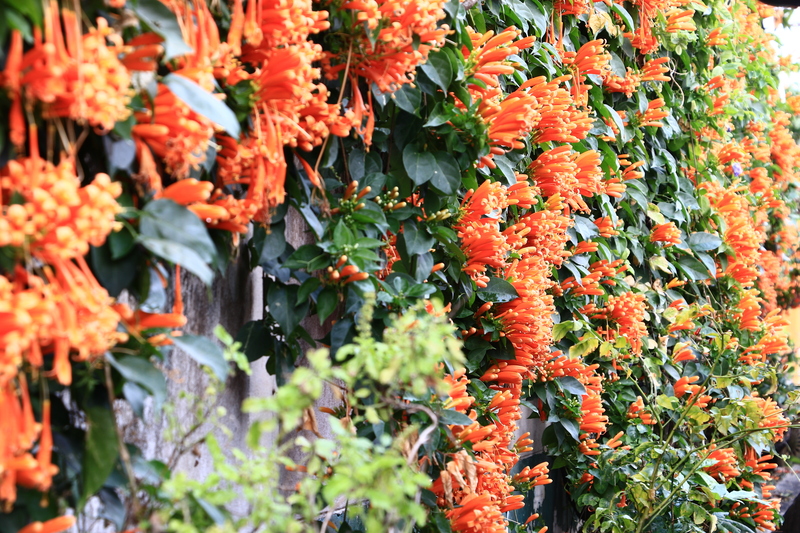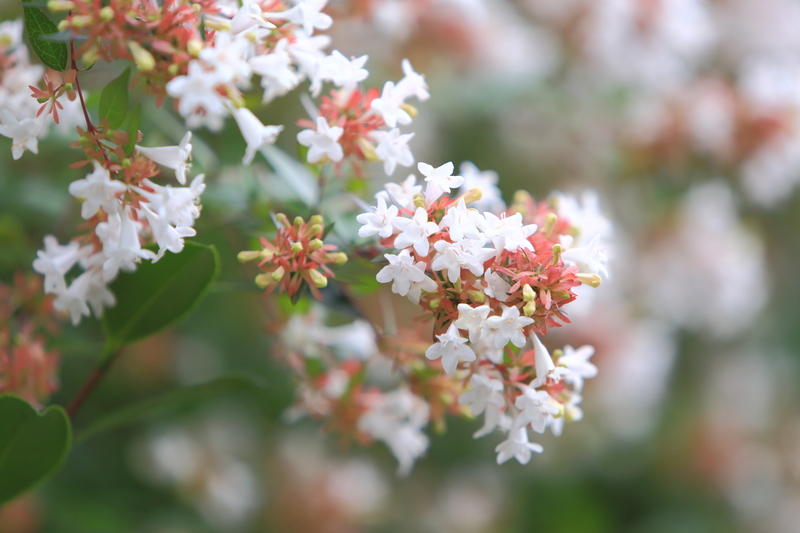Garden Planning with Child Safety and Fun in Mind
Posted on 14/08/2025
Garden Planning with Child Safety and Fun in Mind
Welcome to your comprehensive guide on garden planning with child safety and fun in mind! If you are a parent, caregiver, or grandparent, you know how important it is to create an outdoor space that is both secure and delightful for children. This article takes you step-by-step through transforming your yard or garden into a vibrant, safe, and engaging environment where kids can play, explore, and learn.
Why Prioritize Child Safety and Fun in Your Garden?
A garden is more than just a patch of green or a place to grow plants; it's a dynamic play zone, a learning laboratory, and a safe haven for children. Therefore, incorporating safety features and fun elements during the garden design process is crucial for:
- Preventing accidents and injuries
- Encouraging active play and physical development
- Stimulating creativity and curiosity about nature
- Fostering family bonding and teamwork
The Benefits of a Child-Friendly Garden
A carefully planned child-safe and fun garden offers countless rewards for both children and adults, such as:
- Healthier lifestyle: Children spend more time outdoors, leading to improved physical fitness and mental wellbeing.
- Learning opportunities: Kids gain knowledge about plants, insects, seasons, and sustainability.
- Imaginative play: Natural settings inspire creative games and stories.
- Family memories: Gardening together creates experiences that last a lifetime.

1. Assess & Secure Your Garden Space
The cornerstone of safe garden planning is conducting a systematic safety audit. Here's how:
Check Boundaries and Access Points
- Fencing: Install secure fencing at least 4-6 feet high to prevent wandering or unwanted access.
- Gates: Use childproof locks or latches, and ensure gates self-close and latch securely.
- Visibility: Avoid tall, dense hedges that obstruct sightlines; clear views enable better supervision.
Eliminate Hazards
- Pools & Water Features: Secure ponds, fountains, and pools with barriers or covers; never leave standing water unchecked.
- Tools & Chemicals: Store garden equipment, fertilizers, and pesticides in locked sheds or out of children's reach.
- Sharp Edges & Surfaces: Cover protruding objects and opt for rounded, cushioned edges on play equipment and garden furniture.
- Allergens & Poisonous Plants: Identify and remove hazardous plants; see more in the sections below.
2. Child-Friendly Garden Features and Design Ideas
With the basics of garden safety in place, you can now focus on kid-friendly fun garden ideas that transform your outdoor space into an enchanting wonderland.
Separate Zones for Different Activities
Designate areas for active play, quiet relaxation, and gardening projects:
- Play Area: Allocate a portion of the yard for swings, slides, climbing frames, or sandpits with soft, impact-absorbing surfaces like bark chips or rubber mulch.
- Picnic & Relaxation Zone: Lay down a blanket or use child-sized tables and chairs beneath shade trees for reading, snacking, or quiet activities.
- Vegetable or Flower Patch: Set aside a small raised bed where children can plant, water, and harvest their own crops or flowers.
Incorporate Age-Appropriate Play Structures
- For Toddlers: Low-level slides, crawl tunnels, mini-sandboxes, and push-along toys.
- For Older Kids: Climbing frames, zip lines, treehouses, rope swings, and obstacle courses.
- Water Play: Splash pads, small fountains, and water tables allow for safe, supervised wet fun.
Encourage Nature Exploration
Spark curiosity and a love for the environment by integrating the following:
- Bug Hotels: Craft insect habitats from logs, twigs, and bamboo to invite beneficial species for kids to observe.
- Bird Feeders & Baths: Attract feathered friends and teach children about local wildlife.
- Butterfly Gardens: Plant nectar-rich flowers to encourage butterflies and bees.
3. Selecting Child-Safe Plants and Materials
Avoid Harmful Plants
Not all beautiful plants are suitable for a child-friendly garden. Some popular varieties can be toxic if ingested or cause skin irritations. Always choose non-toxic, safe species by consulting local gardening guides or poison control lists. Particularly avoid:
- Oleander
- Foxglove
- Daffodil bulbs
- Yew berries
- Lily-of-the-valley
Choose Robust, Safe, and Sensory Plants
- Edible herbs and veggies: Basil, mint, cherry tomatoes, strawberries, and sugar snap peas make great hands-on learning and snacking options.
- Sensory plants: Lamb's ear (soft leaves), lavender (fragrant), ornamental grasses (swaying motion), sunflowers (tall and impressive blooms).
- Non-toxic, hardy flowers: Marigolds, nasturtium, pansies, and violas.
Opt for Gentle, Durable Materials
In kid-safe garden planning, material selection matters:
- Non-slip paving stones to prevent falls
- Shock-absorbing surfaces like rubber mulch or soft grass
- Sturdy, weather-resistant wood for raised beds and play equipment (avoid sharp edges or splinters)
- Natural, untreated materials wherever possible
4. Teaching Safety and Garden Skills
Establish Garden Rules
Set clear, positive guidelines such as:
- "Shoes must be worn while in the garden"
- "No throwing stones or tools"
- "Always ask before tasting plants"
- "Wash hands after playing in the soil"
Supervision and Boundaries
Consistent adult supervision is essential, especially for younger children. For older kids, use landmarks or visual cues such as colorful flags, stepping stones, or painted signs to demarcate safe play areas.
Embed Learning in Play
- Gardening Chores: Make watering, planting, and harvesting into fun family activities.
- Observation Games: Create scavenger hunts for different plants, bugs, or colors.
- Seasonal Projects: Build fairy or dinosaur gardens, decorate pots, or make homemade wind chimes.
5. Creating All-Season Fun and Comfort
Provide Shade and Shelter
- Shade Trees: Plant fast-growing options like maple, birch, or willow for natural coverage.
- Awnings, umbrellas, or pergolas: Add extra protection for sunny or rainy days.
Plan for Year-Round Interest
- Evergreen borders for winter color and privacy
- Spring bulbs such as crocus and daffodils
- Autumn leaves and berry-producing shrubs for seasonal fun and foraging
Maintain Safe Surfaces Throughout the Year
- Inspect equipment and fences regularly for wear, splinters, or rust
- Clear leaves and moss from paths to prevent slipping
- Keep snow and ice removal supplies handy in winter climates
6. Involve Children in Garden Planning and Care
Let Kids Help Design Their Space
- Let children choose plants, colors, and features for their garden zones.
- Encourage them to draw their ideal outdoor area and incorporate some of their ideas.
- Assign "ownership" of small plots or pots, boosting responsibility and pride.
Give Them Real Tools - Safely
- Choose lightweight, child-sized trowels, watering cans, and gloves.
- Teach them how to use tools appropriately and store them after use.

7. Sustainable, Eco-Friendly Choices for the Future
Go Organic
Use organic compost, mulch, and natural pest controls to keep the garden environment healthy for children and wildlife alike.
Water Wisely
- Install rain barrels for eco-friendly watering
- Choose drought-tolerant plants
- Let children help monitor garden moisture with rain gauges or DIY projects
Encourage Wildlife
- Plant native species to support local birds and insects
- Create wood piles or stone nooks for mini-beast habitats
- Teach children to observe but not disturb creatures
Final Words: Your Safe and Fun Family Garden Awaits
Planning a safe and fun garden for kids is one of the best gifts you can give your family. With thoughtful design, supervision, and involvement, your outdoor space will become a place of unforgettable adventures, joyful learning, and peace of mind for parents.
Remember, the key to long-term success is adaptability -- as your children grow, continue to adjust the garden's layout, safety features, and activities to suit their changing interests and abilities.
- Start small and build up your garden features over time
- Ask your children for ideas and make them active participants
- Keep safety first, but don't forget the joy and wonder that gardens can provide
By following these guidelines for garden planning with child safety and fun in mind, you can nurture a love of the outdoors that will last a lifetime. Happy gardening!

